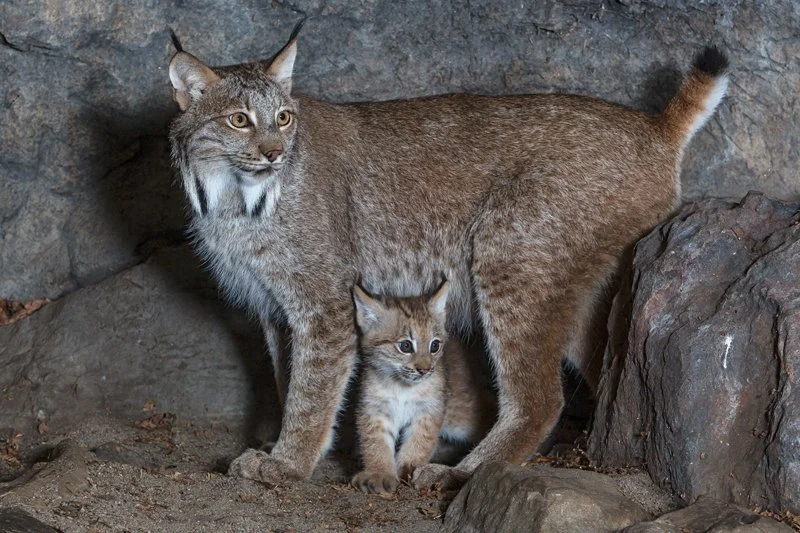The Missing Lynx: is Ireland Ready to Welcome its Lost Predators?
By Science and Environment Editor Leah Moynihan
A large part of modern conservation management is reintroduction, which involves locating or assisting a species to establish in an area where it previously occurred. This can happen naturally, such as wolves in France, or it can be purposefully implemented by humans. This form of restoration enriches the biodiversity of an area and there are many economic benefits. Most people welcome these projects with open arms as they feel that we are responsible for the re-establishment of species that have been ousted from their native ranges. However, many reintroductions can be controversial.
An overcrowded deer population has been a problem in Ireland for many decades. They destroy young shoots and prevent the growth of our already rare native woodland. Additionally, they help the spread of Lyme disease and bovine TB. They also cause hundreds of road collisions each year. Furthermore, a high deer population means that there are more mouths to feed and the deer suffer starvation effects. Therefore, numbers must be reduced in order to protect their quality of life.
Deer no longer have any natural predators in Ireland, so we must step in to re-establish the natural balance. Many conservation professionals have stated that the only way to control deer numbers is through culling. However, the general public has, understandably, not shown favour to this form of control. Additionally, even though deer hunting is effective, it is not as impactful as having predators in the area. Shooting does not change deer behaviour, while the presence of predators makes them fearful of entering certain areas. Furthermore, fencing as a method of deer control is extremely expensive and it tends to exclude grazers completely from the ecosystem. Therefore, other methods have been proposed in order to reduce the deer population to healthy numbers. The most obvious solution is reintroducing predators, however it is not as easy as it seems.
The native fauna in most other European countries are returning naturally, however due to Ireland’s status as an island humans will have to interfere. Wild species that have been already reintroduced in Europe include golden jackals, wild horses, brown bears, and vultures. In response, the wild habitats once lost are also bouncing back. Europe seems to be embracing the return of its wild predators, so why is Ireland so behind?
Currently, reintroducing wolves into Ireland is out of the question. Even though they would have incredible ecological benefits, Ireland’s farmers would simply not be able to cope. Our way of farming would not protect cattle or sheep successfully, as wolves hunt in packs and they are extremely effective predators. Furthermore, too many people live in Ireland’s countryside, while other European countries are more urban. Therefore, Ireland’s livestock and people would be too at risk.
However, the lynx is the perfect fit for Ireland. They are medium sized cats that live in forest environments and are rarely seen. Therefore, they will mainly prey on forest fauna and they will rarely be enticed by livestock in open fields. Furthermore, there are no records of lynx ever attacking humans. The impacts of their reintroduction would be clear; deer numbers would be reduced to healthier levels and their bold behaviour would be altered.
There are much economic benefits to this form of conservation management. For example, the reintroduction of sea eagles on the Isle of Mull provides more income than farming to the local community. Likewise, the reintroduction of a lynx population in Germany saw an addition of $12.5 million annually to the local people from tourism. Wouldn’t it be amazing to know that such a stunning creature has found a home in our forests?
Many similar reintroduction projects have proven to be successful, as European populations of some wild species are beginning to increase. Therefore, there are reasons to be optimistic. However, if Ireland was to reintroduce the lynx, farmers and local communities would have to be involved. Without their cooperation, this is only an unlikely dream. Compensation methods for any livestock lost would need to be implemented as well as subsidies for farmers who have lynx on their land. Additionally, constant research and monitoring would need to be undertaken as we must understand the movements of these creatures in our countryside. An example of successful projects in Ireland are the reintroduction of the sea eagle, the white-tailed eagle, and the red kite. There were clashes with farmers at the beginning, however any major issues have subsided and the programmes can be viewed as a phenomenal success. Reintroduction projects like these show that Ireland is willing to share its wild places with nature once again. Maybe someday you could be walking and spot an elusive lynx crossing your path.



